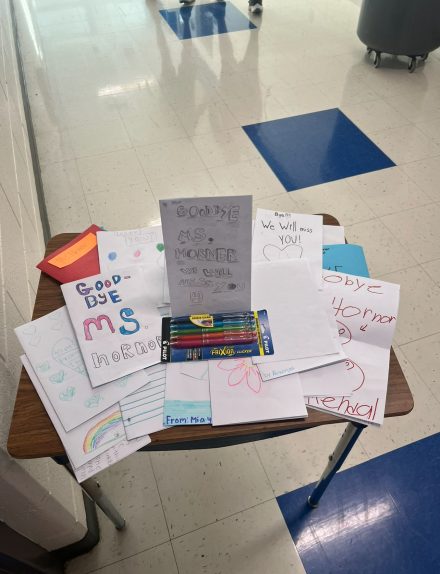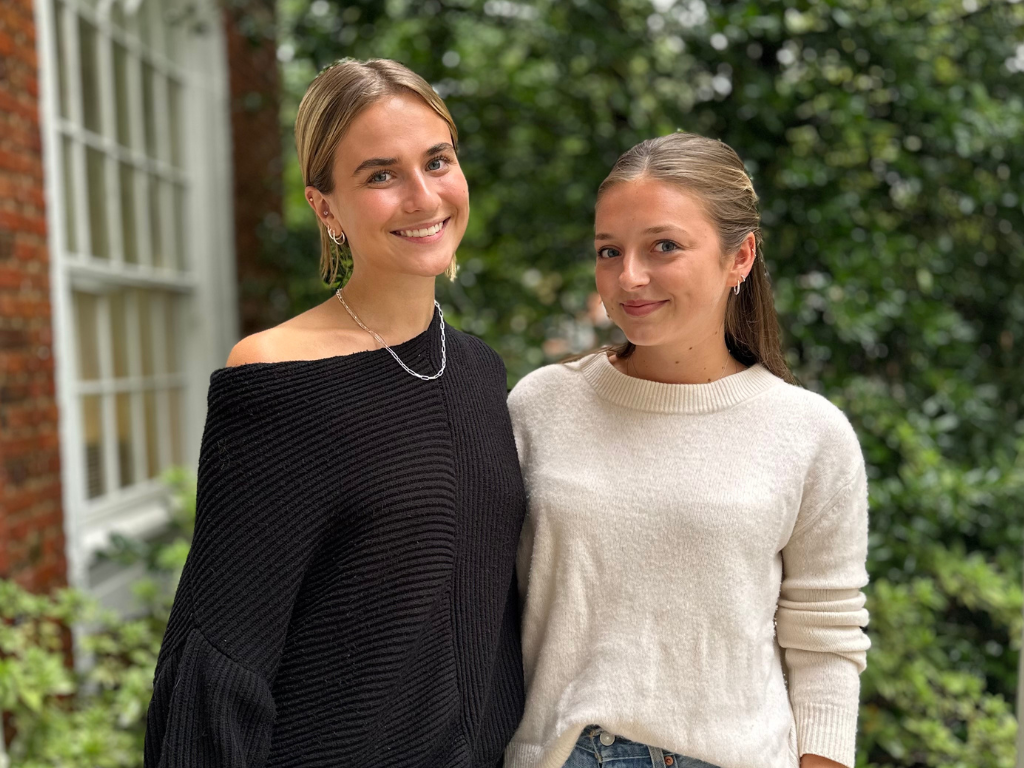In many teacher preparation programs, co-teaching is becoming a cornerstone of instructional practice, allowing teacher candidates to develop their skills while benefiting from the shared expertise of their mentors.
Sasha O’Halloran ’25 and Carolyn Hornor ’25, two elementary and special education teacher candidates at Elon University, embarked on a co-teaching journey at Highland Elementary School in spring 2024 that left a lasting impact on the fifth grade students they served.
As part of their social studies and language arts methods coursework, O’Halloran and Hornor, engaged in a co-teaching experience with a pair of fifth grade co-teachers at Highland Elementary School. Lisa Buchanan, associate professor in the Dr. Jo Watts Williams School of Education, supervised O’Halloran and Hornor in their co-teaching placement and was their social studies methods professor.
The co-teaching model is an instructional approach where two or more educators work together to plan, instruct and assess the same group of students in the same classroom. This model allows teachers to share responsibility for all students, leveraging their unique strengths and expertise to enhance learning. With students at varying academic levels, this strategy enabled a level of differentiation that would have been difficult for a single educator to achieve.
“There were moments where a student needed extra help keeping up with the general education content, and having two teachers meant the teaching weight could be shifted,” said O’Halloran. “For example, one teacher could take the lead on the whole group lesson giving an opportunity for the other teacher to direct their focus to assisting the struggling student.”
Reflecting on the opportunity to partner with their clinical teachers and candidates, Buchanan shared that “social studies is incredibly marginalized in K-5 classrooms in North Carolina, but in this co-teaching partnership, fifth graders engage social studies weekly. The clinical teachers modeled the interdisciplinary nature of English language arts and social studies, mirroring what Professor Lisa Thompson and I aim for in our methods courses.”
One of the most significant aspects of the teacher candidates’ collaboration was the opportunity to bounce ideas off each other as they worked together on lesson plans, tweaking them and improving their trajectory over time.
“We taught the lesson twice and adjusted based on the students’ responses, so the whole unit was always evolving,” said Hornor, reflecting on how much they learned from one another’s strengths.
“After each lesson, we would reflect together on what worked and what didn’t,” O’Halloran shared. “Hearing directly from the students about their experiences allowed us to make immediate changes, creating a more responsive and engaging learning environment.”
One clinical teacher came from a social work background, while the other was a former principal with expertise in both special and general education. Together, they brought diverse perspectives to the classroom. Their unique experiences helped them develop a strong professional bond, which became a vital support system — not only for each other but also for their students.
“When you’re the only teacher in the room, you tend to carry all the responsibility yourself. But having another educator there opens up so many opportunities to learn from one another — and the students benefit the most,” O’Halloran shared.
The teacher candidates’ partnership didn’t just benefit their teaching. It expanded their views on curriculum design, instructional methods and classroom management. They split the fifth grade curriculum strategically, leading lessons based on their strengths and facilitated reading groups that worked with students at different skill levels. By the end of the semester, many students saw their reading abilities improve significantly, some advancing by two grade levels.

One of the most heartwarming moments came when the students, now thriving readers, wrote letters to the teacher candidates, thanking them for their dedication and support.
“They thanked us for helping them read better, and I remember getting teary-eyed reading their notes,” said Hornor. “You don’t always get to see the direct impact you’re making, but those letters were proof.”
In reflection of their co-teaching experience, O’Halloran and Hornor highlighted the impact of collaboration on both their professional growth and student outcomes. As schools across the nation grapple with teacher shortages, the success of the co-teaching model at Highland Elementary School offers a promising solution. By fostering collaboration, schools can create supportive environments that benefit both teachers and students, ultimately leading to more effective and enriching education. This approach not only provides students with more individualized attention but also enables educators to learn from one another, share responsibilities and better manage diverse classroom needs.



